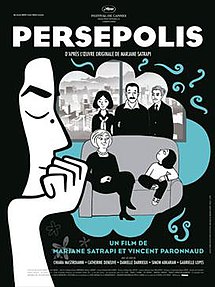Some last thoughts on comics in academic libraries. When Randall Scott said "Libraries are designed to collect books" I was momentarily annoyed that he would ascribe such a limited scope to libraries, and then I remembered he was talking about academic libraries and not public libraries (which are designed to do so much more than just collect books). He does go on to say that he catalogs and participates in digitization projects in order to make these items available to the largest audience possible, which is definitely a view I can agree with. Making comics accessible in digital format is something that can benefit all libraries, and by extension their patrons.
The only portion of William Fee's essay on the finer points of cataloging comics that was relevant in any way to youth services was his mention of including a 521 on target audience and not giving age inappropriate materials to children. My instinct is that there will be very few young users of a state library, so I wouldn't think this would truly be an issue there. But in public libraries, I am a pretty firm believer that librarians should not be the ones to tell anyone (including children) that they are not allowed to check particular materials out. If a parent doesn't want their child to check something out, then it is the parent's responsibility to be present with their child and monitor their choices. If a child is alone, then librarians should assume the parent trusts their child to read whatever they want.
Now to Persepolis by Marjane Satrapi. This is the kind of "graphic novel" I really enjoy reading. The simplified and stark style lends itself well to a memoir of a growing up in such a dangerous and complex environment. Marji tells her story in vignette chapters that while focusing on a time and place I wasn't familiar with, still felt very relatable to me. I remember those first acts of rebellion, the highs and lows of crushes, the struggles with school. This story also helped illuminate the events of the Iranian Revolution from a different perspective than what I saw in Argo, which was primarily from an American perspective. The atrocities that she lived through, while alien to me, are especially well captured in the comics medium.


I love that you mentioned Argo because I totally thought of that movie while reading Persepolis. I loved Argo... in fact, it was my favorite movie of 2012 (crossing my fingers for Oscar Best Picture!) I think my love for that movie really influenced my love for Persepolis. Because of Argo, I went into Persepolis with at least some understanding of the historical context and important people and events of the time. Now I'm not saying everyone has to see Argo before reading Persepolis (although really, everyone should see Argo), but I think doing even a little bit of research about the Iranian Revolution before reading Persepolis makes it a lot more enjoyable and easier to appreciate and understand. -Jenna
ReplyDeleteI don't know about you but I don't remember learning much about the Iranian Revolution in school, except to explain the connection between the Abrahamic religions. So what I saw in Argo and what I read in Persepolis was basically my introduction to this time in history. Living in such an interconnected world means we need to be more aware of international history. I think using books such as Persepolis to spark interest in these subjects. It worked for me anyway!
DeleteI'll agree that doing some research about the Iranian Revolution and the current regime helps you appreciate and understand Persepolis but I also think the reverse is true in a more significant way and a way that I think graphic novels are particularly well suited for. Bringing an emotional and contextual point to the facts of history.
ReplyDelete